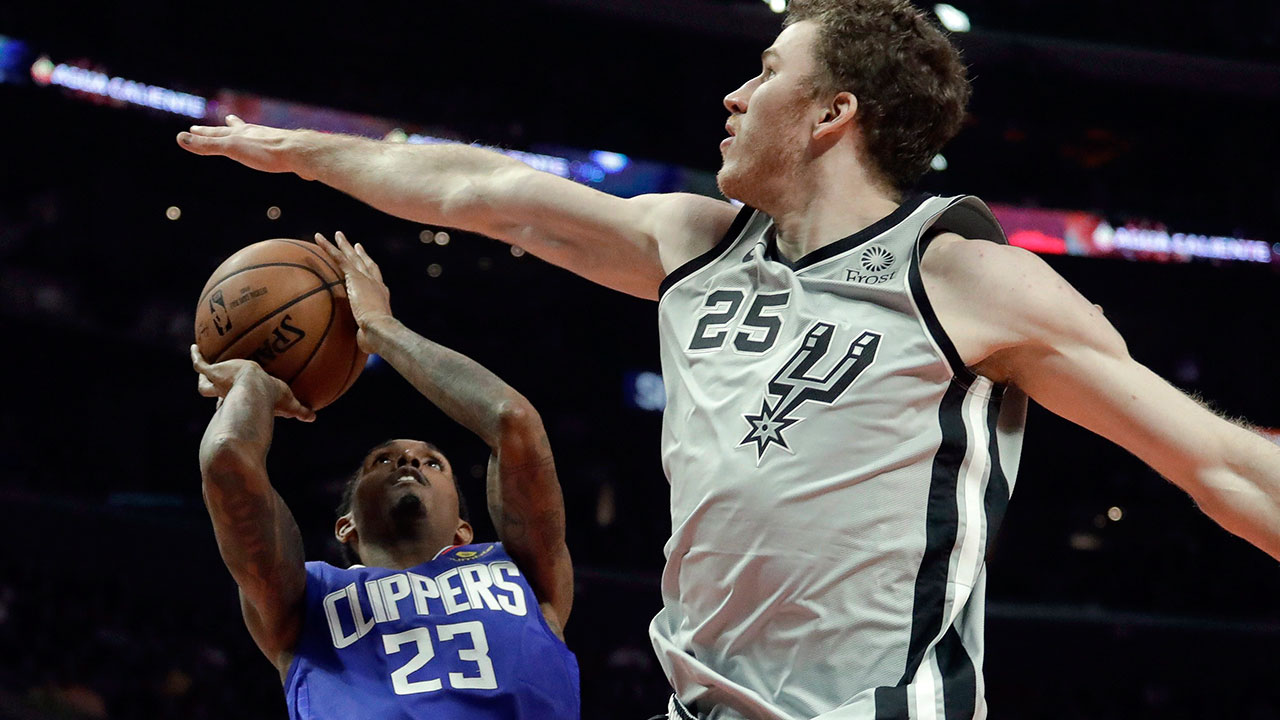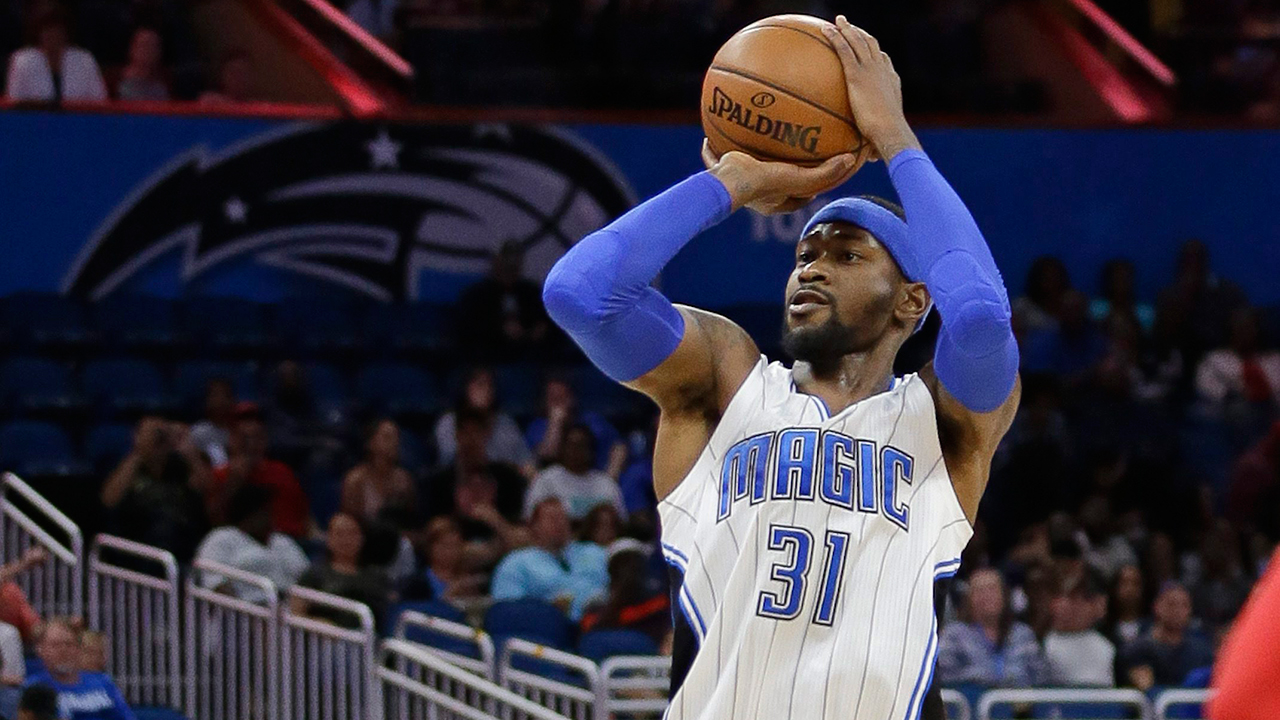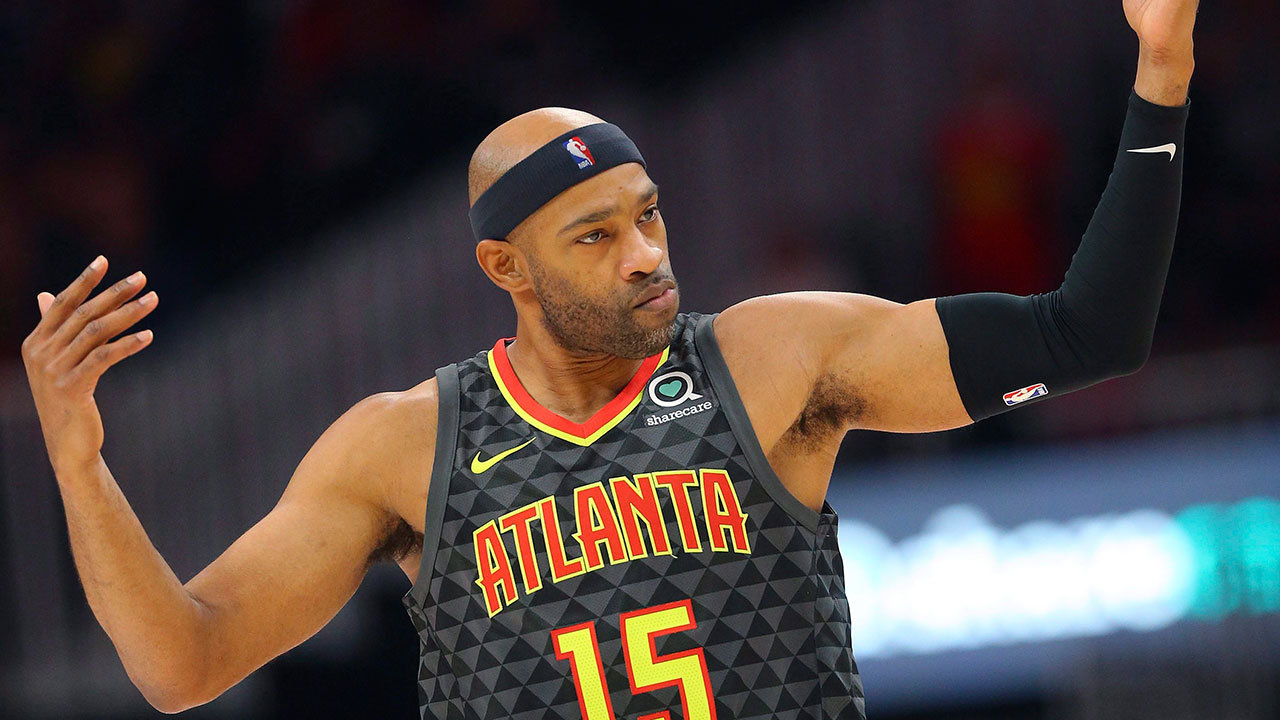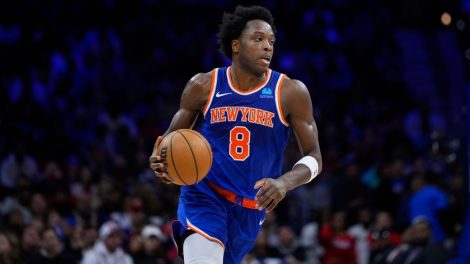When the Toronto Raptors broke up with DeMar DeRozan in the off-season — trading him to San Antonio as the central piece of the Kawhi Leonard deal — it dominated headlines.
There were hurt feelings and fears for what might come next, and rose-tinted musings about what came before, as breakups often inspire.
But sometimes separating is what’s best for both parties, and the time away from Toronto has been kind to not just DeRozan but other former Raptors as well. Here’s how some of them have fared so far this season:
DeMar DeRozan, San Antonio Spurs

In Texas, DeRozan has both grown and stayed the same.
He’s become the fulcrum of San Antonio’s offence, posting career-highs in assists per game and leading all NBA wing players in assist percentage (AST%) this season — a stat that measures how many of his teammates’ made shots a player assists on.
“He’s turned out to be maybe the best passer on our team, frankly,” San Antonio coach Gregg Popovich said earlier this year.
But those strides he’s taken as a playmaker have been accompanied by a doubling down on his defiant rejection of league trends towards three-pointers and shots at the rim, opting instead for a midrange-heavy game that would have been more at home in the beginning of Popovich’s coaching career than its twilight.
Only five per cent of DeRozan’s attempts come from beyond the arc and he’s converting on them less than 20 per cent of the time, but his overall efficiency is buoyed by his ability to make the midrange jumpers he’s been known for his whole career. It may not be fashionable anymore, but it does work for him. So far this year he’s averaged just under 23 points per game on his highest field-goal percentage since his rookie season.
San Antonio hasn’t missed the playoffs in 21 years — long enough for Texans to go from being born to being able to watch Spurs games at a bar — and if that streak is to continue, the Spurs need to squeeze every point possible out of DeRozan’s playmaking and throwback buckets.
Jakob Poeltl, San Antonio Spurs

Poeltl remains a work in progress.
His AST% has nearly doubled from last year — which is commendable but only brings him up to league-average levels for a big man — and he’s shown growth as a rebounder, particularly on the offensive glass where he ranks in the 95th percentile of fellow giants in the percentage of their team’s misses they collect.
He still doesn’t space the floor — precisely none of his shots have come from beyond the arc — but San Antonio is, by the numbers, better in the minutes he’s playing.
The Spurs score a blistering 117.8 points per 100 possessions when he’s on the floor — 6.4 more than when he sits — which would be the best mark in the league if they sustained it for full games. Of course, sample size matters. Giving Poeltl more minutes won’t transform the Spurs into the 73-win Golden State Warriors. But his continued contribution in the minutes he does play will be essential for San Antonio down the stretch in a bloated Western Conference playoff picture.
[snippet id=4398207]
Rudy Gay, San Antonio Spurs
Rounding out the trio of former Raptors wearing silver and black is Gay. His averages of 13.7 points, 6.5 rebounds, and 2.4 assists per game aren’t earth-shattering, but the way he’s collected those numbers matters.
Through the first stretch of the season, Gay has been both efficient and consistent. His points per shot attempt is a career-best 1.21 — placing him in the 83rd percentile among forwards — and his effective field-goal percentage is 57.4 per cent, another career-high.
Much of that comes from his three-point shooting. While he’s only taking 2.7 shots from long range per game, he’s connecting on them a staggering 43.5 per cent of the time — invaluable floor spacing for a Spurs team that attempts fewer shots from beyond the arc than any other team in the NBA.

Remember when Ross won the Dunk Contest? You’re forgiven if you don’t; 2013 feels like an impossibly long time ago and a lot has changed since then. Ross has too, even if that change looks more like settling into who he is as a player.
He’s embraced his role coming off the bench and has factored into more offensive possessions this year than he did during any other season in his career. While there is a degree of irony in a man who made his name by dunking taking most of his shots nowhere near the rim — only about six per cent of his attempts have come within five feet of the rim so far this year, one of the lowest marks among NBA wing players — the shot selection has led to a personal-best 13.4 points per game on shooting splits that are well above his career averages.
Maybe most importantly he has been healthy, appearing in all of the Magic’s games this season after being limited to just 24 last year with a knee injury.
Cory Joseph, Indiana Pacers
Joseph has been exactly what the Indiana Pacers have needed him to be — a steady hand to steer the offence when Victor Oladipo has to sit.
The combination of Joseph, Tyreke Evans, Doug McDermott, Thaddeus Young, and Domantas Sabonis — the Pacers’ third-most used lineup overall and the one Joseph has played the most with — has outscored opponents by nearly 30 points per 100 possessions while on the floor together. Much of that excellence comes from effort plays such as second-chance points and transition buckets as opposed to perfect execution of offensive sets, and the luxury of having a group to trot out when Oladipo sits that will not only stay afloat but can build momentum is invaluable come playoff time.
Vince Carter, Atlanta Hawks

Carter is 41 years old. The highlight-reel dunks have mostly disappeared, as have the days he could take over a game and carry his team to victory. That isn’t to say he can’t contribute at all. He’s averaging a little under seven points per game in less than 20 minutes of action, while shooting a respectable 36.1 per cent from three-point range on about four attempts per game.
But his real value isn’t one you can track with box scores. In the twilight of his career, he’s become more than a player. He’s a teacher. And, especially on a rebuilding team like Atlanta, Carter’s mentoring may mean more.
[relatedlinks]







